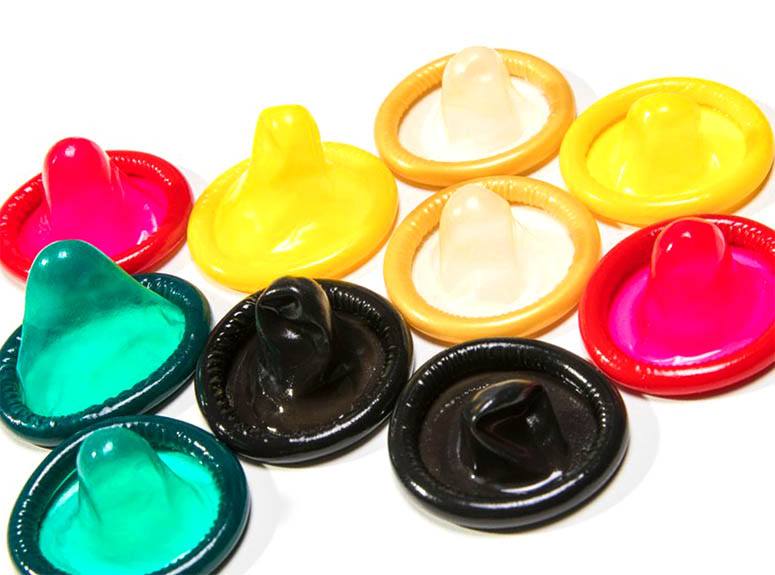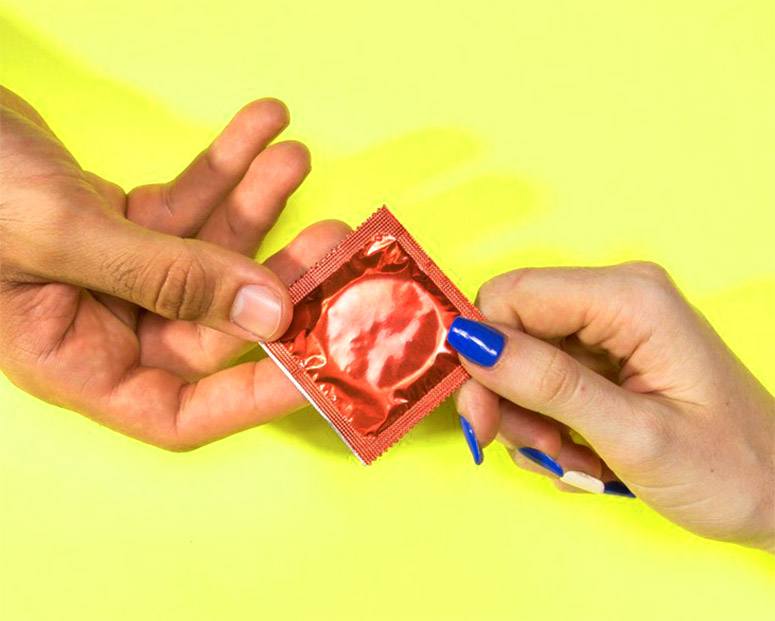Contents
What are the odds of getting pregnant with a condom? This is a common question among individuals considering contraception options. Contraception is an essential component of family planning and sexual health, offering a variety of options tailored to meet individual needs.
Among these options, condoms are among the most widely utilized methods, recognized for their effectiveness and additional benefits.
This article aims to provide a comprehensive overview of contraception, with a particular focus on condoms—exploring their functionality, effectiveness, and the various factors that influence pregnancy risks.
Understanding the odds of getting pregnant while using a condom involves examining how they work, their success rates, and how proper usage can affect these outcomes.
Furthermore, this article examines the advantages of using condoms, potential risks associated with their use, and tips for maximizing their effectiveness.
By understanding these aspects, individuals can make informed decisions regarding their sexual health and appreciate the role that condoms can play in their contraceptive strategies.
What is contraception?
Contraception refers to a broad range of methods and techniques designed to prevent pregnancy and help manage reproductive health. It allows individuals and couples to make well-informed decisions about family planning and reproductive choices.
The spectrum of contraceptive options is diverse and includes several categories, each with its own mechanism and effectiveness.
Barrier methods, such as condoms and diaphragms, physically block sperm from reaching the egg, while hormonal contraceptives, including birth control pills, patches, and injections, alter the body’s hormonal balance to prevent ovulation and make the uterine environment less conducive to fertilization.
Additionally, emergency contraception, like the morning-after pill, is used to prevent pregnancy after unprotected sex or contraceptive failure.
Understanding the various methods of contraception is crucial for several reasons. Not only does it aid in preventing unintended pregnancies, but it also promotes overall sexual health and responsibility.
By being knowledgeable about different contraceptive options, individuals can make choices that best fit their health needs, lifestyle, and personal circumstances.
This informed approach to contraception supports better reproductive health outcomes and empowers people to take control of their sexual and reproductive well-being.
What is a condom and how does it work?

A condom is a widely recognized barrier method of contraception that is specifically designed to prevent pregnancy and minimize the risk of sexually transmitted infections (STIs) during sexual intercourse.
Condoms are available in both male and female forms and function as a protective barrier that collects sperm during ejaculation, thereby reducing the likelihood of conception.
When utilized correctly, condoms represent one of the most effective contraceptive methods, making them a vital component of safe sex practices.
What are the odds of getting pregnant with a condom?
The likelihood of pregnancy when utilizing a condom is significantly influenced by both its proper usage and its effectiveness as a contraceptive method.
Research indicates that typical condom usage has a failure rate of approximately 13%, whereas perfect use can reduce this probability to around 2%.
It is crucial for individuals to understand the factors that affect condom effectiveness in order to minimize the risk of unintended pregnancies during sexual activity.
Does the type of condom affect pregnancy risk?
The type of condom utilized can have a significant impact on the pregnancy risk associated with sexual activity. Various condom types, such as latex, polyurethane, and natural membrane, exhibit differing levels of effectiveness in preventing pregnancy and sexually transmitted infections (STIs).
It is essential for individuals to comprehend the implications of their condom choices to ensure optimal protection during sexual intercourse.
Latex condoms are the most commonly used option and provide excellent protection against both unintended pregnancy and sexually transmitted infections, including HIV.
Conversely, polyurethane condoms serve as a suitable alternative for individuals with latex allergies, offering reliable protection, although their effectiveness against STIs may be somewhat lower than that of latex condoms.
Natural membrane condoms, while providing a more natural sensation, are not recommended for STI prevention, as they may allow viruses to pass through.
Recognizing these distinctions can influence individuals’ sexual behavior, promoting safer practices and informed decisions regarding their health.
What are the factors that affect condom effectiveness?
Several factors can influence the effectiveness of condoms in preventing pregnancy, such as proper usage, appropriate storage, and adherence to expiration dates.
For instance, inconsistent use of condoms during each act of sexual intercourse may result in contraceptive failure, thereby increasing the risk of unintended pregnancy.
Additionally, certain lifestyle choices, including the use of oil-based lubricants, can compromise the structural integrity of the condom material.
Improper storage practices, such as leaving condoms in a vehicle or wallet, may lead to degradation caused by heat and friction.
It is essential for individuals to verify the expiration date prior to use, as expired condoms have a higher likelihood of breaking.
To further mitigate the risk of condom failure, it is crucial to adhere to guidelines during application – for example, squeezing out air from the tip while putting the condom on can help prevent rupture.
Educating oneself about suitable lubricants—specifically water-based or silicone-based options—can also contribute to ensuring that the condom remains effective.
By being attentive to these factors and following best practices, individuals can significantly enhance the reliability of condoms and promote safer sexual experiences.
What are the other benefits of using condoms?

Along with their primary role in preventing pregnancy, condoms provide several additional benefits that contribute to sexual health and wellness.
They are highly effective in preventing sexually transmitted infections (STIs), positioning them as an essential element of safe sex practices.
Moreover, the use of condoms can enhance pleasure during sexual intercourse, thereby facilitating a more satisfying experience for both partners.
Prevents STIs
One of the primary benefits of utilizing condoms is their established effectiveness in preventing sexually transmitted infections (STIs), including HIV, gonorrhea, and chlamydia.
By creating a barrier during sexual intercourse, condoms significantly diminish the likelihood of STI transmission between sexual partners.
The importance of STI prevention cannot be overstated, as many infections can lead to serious health complications if left untreated. For example, untreated chlamydia can result in infertility, while HIV can progress to AIDS, posing significant health risks.
Condoms serve not only as a physical barrier but also empower individuals to take control of their sexual health.
Regular and proper use of condoms is advised for anyone who is sexually active, particularly those with multiple partners, as this practice not only safeguards against infections but also contributes to healthier and more responsible relationships overall.
Consistent condom usage thus represents a vital strategy in promoting public health and reducing the stigma associated with STIs. But what are the odds of contracting a sexually transmitted disease in a lifetime? Understanding these risks can further emphasize the importance of using condoms and encourage more informed discussions about sexual health.
Easy to use
Condoms represent one of the most straightforward contraceptive methods available, offering accessibility and convenience for individuals engaged in sexual activity.
With clear instructions for proper application, condoms can be seamlessly integrated into most sexual encounters, give the power toing individuals to take responsibility for their sexual health.
Along with preventing unwanted pregnancies, condoms significantly reduce the risk of sexually transmitted infections (STIs), serving as a dual-purpose solution for responsible sexual behavior.
It is essential to ensure that the condom is not expired and is stored in a cool, dry environment to maintain its effectiveness.
Adhering to proper usage techniques, such as pinching the tip before unrolling the condom, can enhance the experience while ensuring maximum protection.
By opting to use condoms, individuals not only protect their own health but also demonstrate consideration for their partners, thereby fostering a culture of mutual respect and well-considered choices.
Can enhance pleasure
Contrary to common misconceptions, condoms can enhance pleasure during sexual intercourse by providing a heightened sense of comfort and security.
This allows partners to fully engage in the experience. Many condoms are designed with features such as additional lubrication or ribbed textures, which serve to further increase enjoyment.
These enhanced features can result in more intense sensations for both partners, ultimately contributing to a more satisfying intimate encounter.
Varieties such as ultra-thin condoms offer a more natural feel, making them a preferred choice for individuals who prioritize sensitivity.
Other options are textured with studs or ribs, specifically designed to stimulate and enhance pleasure during intercourse.
In this context, selecting the appropriate type of condom not only promotes safety but also significantly improves sexual health and wellness, ensuring that pleasure is not compromised for the sake of protection.
What are the risks of using condoms?
Condoms are widely regarded as a safe and effective method of contraception –
however, it is important for individuals to be aware of certain risks and misconceptions associated with their use.
These risks may include allergic reactions to specific materials, such as latex, as well as the potential for slippage or breakage during sexual activity.
Such occurrences can result in contraceptive failure and unintended pregnancies, thereby warranting careful consideration and proper usage.
Allergic reactions
Certain individuals may experience allergic reactions to specific condom materials, most commonly latex, leading to discomfort and potential interference with sexual activity.
For those with latex sensitivity, alternative condom options such as polyurethane and polyisoprene are available.
These allergic reactions can present in various forms, including itching, burning sensations, and swelling in sensitive areas. In more severe instances, individuals may experience hives or even anaphylaxis, the latter of which can pose a life-threatening risk.
It is essential for individuals with a known latex allergy to consider non-latex alternatives that offer effective protection against sexually transmitted infections and unintended pregnancies.
Polyurethane condoms, recognized for their strength and excellent heat transfer properties, alongside polyisoprene options that closely resemble the tactile experience of latex, provide safe and comfortable choices.
Consultation with a healthcare provider is advisable for personalized recommendations and to ensure optimal health precautions are taken when selecting condom materials.
Slippage or breakage
Condom slippage and breakage are prevalent issues that can compromise their effectiveness, thereby increasing the risk of unintended pregnancies and sexually transmitted infections (STIs).
Adhering to proper usage techniques and carefully selecting condoms can significantly mitigate these risks.
It is essential to understand the various factors contributing to these problems for individuals relying on this form of protection. The most common causes include insufficient lubrication, incorrect application, and the use of expired or incompatible condoms.
Selecting the appropriate size of condom is critical, as a poor fit can easily lead to slippage or breakage during sexual activity.
To minimize these risks, individuals should consistently check the expiration date and ensure proper storage conditions.
Additionally, utilizing water-based or silicone-based lubricants can enhance safety and performance.
Implementing these straightforward guidelines can help maintain the integrity of the condom, ensuring it fulfills its intended purpose effectively and provides peace of mind for both partners.
Decreased sensation
Some individuals report a decrease in sensation during sexual intercourse when using condoms, which can impact the overall sexual experience.
Many condom brands offer ultra-thin options that are specifically designed to enhance sensitivity while still providing effective protection.
Upon further exploration of this topic, it is essential to acknowledge that various alternatives are available for those seeking to improve their intimate encounters.
For example, the use of lubrication can significantly enhance pleasure and reduce friction, leading to a more satisfying experience.
Additionally, some couples may opt to experiment with different types of condoms, such as textured or flavored varieties, which can introduce new sensations and enhance enjoyment.
By prioritizing sexual health and wellness, individuals can identify solutions that work for them, ensuring that both safety and pleasure are maximized.
How to increase the effectiveness of condoms?

To maximize the effectiveness of condoms as a contraceptive method, it is imperative to adhere to proper usage guidelines and implement safe sex practices.
This entails verifying expiration dates, utilizing water-based lubricants, and ensuring a secure fit to minimize the risk of slippage and breakage.
Proper use
The proper use of condoms is essential for ensuring their effectiveness in preventing pregnancy and sexually transmitted infections (STIs). Key steps include:
- Verifying the expiration date;
- applying the condom correctly;
- removing it carefully after intercourse to avoid the spillage of semen.
It is important to open the condom package with caution to prevent tearing and to ensure that the condom is rolled onto an erect penis with the correct side facing outward.
Utilizing water-based or silicone-based lubricants can enhance comfort and reduce the risk of breakage – however, oil-based products should be avoided as they can compromise the integrity of the material.
To better understand how effective condoms are, it might be helpful to ask what are the odds of getting pregnant with a condom?
Engaging in regular discussions about safe sex practices with partners is crucial for reinforcing the importance of condom use.
This dialogue can also address any questions or concerns regarding contraception and STI prevention, ultimately contributing to a healthier and more responsible sexual experience.
Using condoms with other forms of birth control
Combining condoms with other forms of birth control can significantly enhance contraceptive effectiveness and reduce the likelihood of unintended pregnancies.
For example, using condoms in conjunction with hormonal contraceptives offers dual protection against both pregnancy and sexually transmitted infections (STIs).
This strategy not only increases the overall reliability of pregnancy prevention but also ensures that individuals are protected against STIs, which is particularly critical in non-monogamous relationships or when the STI status of partners is unknown.
Many couples find that utilizing a condom alongside methods such as oral contraceptive pills, intrauterine devices (IUDs), or implantable devices provides peace of mind. It’s worth considering, what are the odds of getting pregnant with a condom alone compared to using it with other contraceptive methods?”
Incorporating condoms as a supplementary method can effectively mitigate the risks associated with potential contraceptive failures, thereby promoting a more responsible and proactive approach to sexual activity.
What to do if the condom breaks or slips off?
When a condom breaks or slips off during sexual intercourse, it is imperative to take immediate action to assess the risk of unintended pregnancy and sexually transmitted infections (STIs).
Utilizing emergency contraception and considering a pregnancy test are crucial steps in effectively managing the situation. Firstly, the individual should remain composed and evaluate the circumstances.
If there is a belief that pregnancy may be a possibility, it is advisable to consult a healthcare provider regarding emergency contraception options, which are most effective when administered within 72 to 120 hours following unprotected intercourse. This situation often leads to the question, what are the odds of getting pregnant with a condom failure?”
Additionally, if there is concern about potential exposure to sexually transmitted infections, seeking prompt STI testing is equally important.
The option for testing and treatment can alleviate anxiety in the aftermath of such incidents and guide the individual toward appropriate care and preventive measures for the future.
Scroll down to view our FAQ on the chances of getting pregnant with a condom over a lifetime.
Discover the enchanting world of probabilities and rare phenomena. Enhance your curiosity and expand your knowledge by exploring our articles at WhatAreTheOddsOf.NET.



